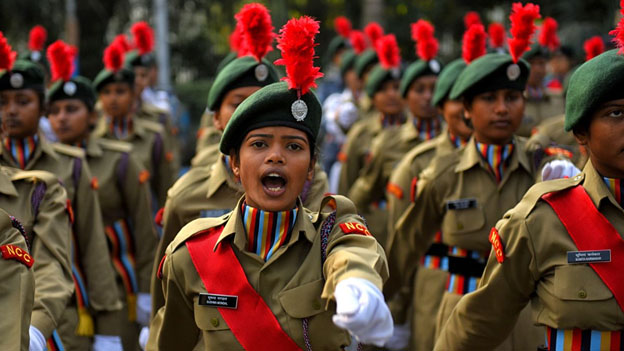The role of women in the Indian armed forces has changed drastically over the years. With a shift from being just a support staff to actually fighting on the frontlines, women have made significant contributions to their nation and society.
The Indian armed forces are one of the most powerful examples of how change is possible, even when people come from different backgrounds.
How did women come to serve as soldiers in India?
Women have served as soldiers in India from the very beginning. In fact, many women have been found to be warriors of the first order who fought in battles and led armies. The way in which women became communalized for military service was a gradual process.
The practice of enlisting women into the army was not always widespread or accepted. For instance, during the British Raj, there were strict regulations governing how female recruits could be enlisted and they were allowed to serve only if they had no brothers or sons above the age of fifteen who could fight on their behalf.
In ancient India, women were considered unequal to men but they still served as soldiers alongside men. They held important positions within military forces and also took up roles such as archers and chariot drivers with great bravery.
What is their current role in the military and other organizations in India?
Military officers have always been the top level decision makers. They have to make strategic decisions, be creative, and think outside the box. In recent years, these roles have been challenged by AI-powered machines.
Artificial intelligence has many uses in various fields including military and organizations in India. Despite its growing presence in recent years, it is still a new concept for many people. There are several organizations that are using AI to make their work easier and more efficient such as the Indian Airforce’s ‘Scenario Planning’ project which uses a data infused decision support system that can help identify possible conflict scenarios on the ground and how to prevent them.
Women’s Role in Armed Forces Today and Why It Matters
The United States remains the world’s leading military power, and it is important that we retain this status. However, we must also be conscious of the fact that as a nation we have not been in much of a position to make policy changes in recent decades. This is largely due to the increased presence of women – they make up nearly 50% of the American population.
Women are not just adapting to their roles in society, but are actively changing how society functions and how it perceives itself. In these ways, women’s engagement in armed forces matters for them on an individual level because it has implications for their gender’s place in society.
Women have been increasingly participating actively in military activity for many years now; today, about half of all active duty members are women.
The Changing Role of Women in Indian Armed Forces
This timeline of how the role of women in Indian Armed Forces has changed over the years will help you understand the struggles faced by women in this field.
After independence, more and more women were inducted into Indian Armed Forces. However, there were many instances of sexual harassment and discrimination against them. It was not until 1990 that women were allowed to serve in combat roles.
The Role of Women In Indian Armed Forces
India is one of the few countries where women have traditionally not been allowed to join the military. But with more and more women in India joining the armed forces, opportunities for women are increasing and their role in society is becoming better understood. Women in armed force using latest technology weapons and optics such as red dot & holographic sights.
Women are now breaking barriers to serve as infantry soldiers and work in areas that were previously considered male only territory. Women have also taken up command positions in combat units, a practice that was rare before 1990s.
The Indian Army has seen an increase of over 20% female representation since 2010 which led to some changes in policies. Though there are still some gender biases and archaic traditions within the military, there is a greater understanding of what it means to be a woman serving on active duty.










